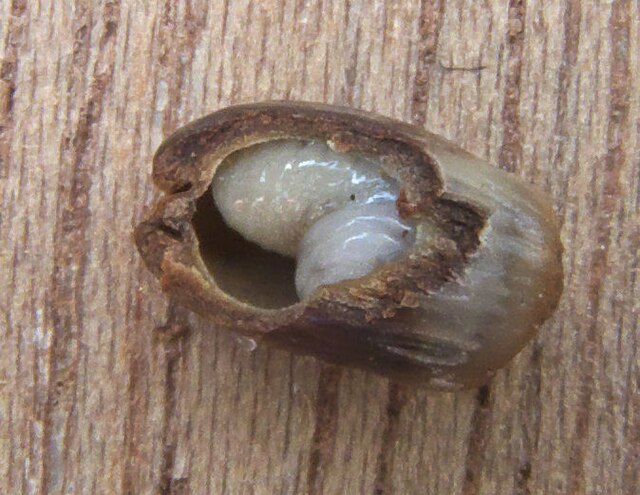Diplolepis rosae is a gall wasp which causes a gall known as the rose bedeguar gall, bedeguar gall wasp, Robin's pincushion, mossy rose gall, or simply moss gall. The gall develops as a chemically induced distortion of an unopened leaf axillary or terminal bud, mostly on field rose or dog rose shrubs. The female wasp lays up to 60 eggs within each leaf bud using her ovipositor. The grubs develop within the gall, and the wasps emerge in spring; the wasp is parthenogenetic with fewer than one percent being males.
Diplolepis rosae
Fine detail of the branched filaments of the gall
A section through a young gall showing the larvae and cells
Rose bedeguar showing the emergence and / or possible predation holes of the gall fly 'cells'
Galls or cecidia are a kind of swelling growth on the external tissues of plants. Plant galls are abnormal outgrowths of plant tissues, similar to benign tumors or warts in animals. They can be caused by various parasites, from viruses, fungi and bacteria, to other plants, insects and mites. Plant galls are often highly organized structures so that the cause of the gall can often be determined without the actual agent being identified. This applies particularly to insect and mite plant galls. The study of plant galls is known as cecidology.
Oak artichoke gall caused by Andricus foecundatrix
Artichoke gall cut open to reveal wasp larva
Knopper gall caused by Andricus quercuscalicis
Oak gall caused by Neuroterus albipes forma laeviusculus








